Pearl Harbor Attack
On Sunday morning, December 7, 1941, Japan launched a surprise attack on the United States of America, attacking aircraft with a deck aviation Pacific base fleet USA Pearl Harbor, located on one of the Hawaiian Islands - Oahu.
The formation of Admiral Nagumo’s aircraft carriers began preparations for the operation in the summer of 1941. 26 November 1941 of the year it came out of Hitokappu Bay, the southern tip of Iturup and, observing radio silence, turned to the island of Oahu through the northern waters of the Pacific Ocean, which ensured the achievement of surprise.
The basis of the strike connection of the ships were six heavy aircraft carriers: "Akagi", "Kaga", "Hiryu", "Soryu", "Dzuykaku" and "Sekaku". In the open waters of the ocean, this armada received the last blessing from Tokyo - a radiogram “Rise to Niitaka 1208 Mountain”, which by secret code meant: the attack will take place in the morning of December 7. Impact ships secretly entered the area designated for lifting aircraft. Pearl Harbor on this Sunday was about a hundred ships and ships, including 8 battleships, the same number of cruisers and 29 destroyers. More than a third of the personnel rested on the shore.
At the command, the crews of the first wave aircraft occupied the cabs of the vehicles. Carriers turned against the wind and added speed. At 6 in the morning hours of Hawaiian time, the first shock echelon, which was headed by the commander of the aviation part of the aircraft carrier "Akagi" captain of the first rank, Futida, gained the height of 3000 meters. 183 combat aircraft headed for Pearl Harbor with four attack groups, 51 diving bomber “Aychi” D3A (then the Americans will give him “his” name - “Val”) with a quarter-ton bombs and 89 deck bombers “Nakajima” BXNXXXXXXXX ), of which 5 aircraft had torpedoes on suspensions, and 2 - 40-kilogram bombs.
Slightly to the side, carrying out the cover, they went with the 43 bearing of the Mitsubishi A6M ("Zero") fighter.
An hour later, the second wave of the car went up. It consisted of 80 bomber dive bombers D3A, 54 bomber B5N2 and 36 fighters А6М. Headed this train captain 3 rank Simazaki.
The original system of aircraft names, adopted in Japan, played its role along with the veil of secrecy around its own aviation, perfectly organized by the Japanese. The American and British military knew amazingly little about the power of the Air Forces of the Land of the Rising Sun, including about its deck vehicles. The allies common at that time was the opinion that Japanese aviation, although quite numerous, was for the most part outdated and generally “second-rate”. For such a “slight error” the Anglo-Saxons paid thousands of lives.
Meanwhile, the basis of the aviation of the Japanese Navy was very advanced combat vehicles. The “oldest” of the Pearl Harbor raids were the B5N2 Bomber bombers B5N2 from Nakajima, which began to arrive on ships from 1937 onwards. By the beginning of the forties, he no doubt still remained the world's best carrier-mounted torpedo bomber. Equipped with an 1115 hp motor. with variable pitch propeller, fitted with retractable landing gear and Fowler flaps, with solid armament including one 794-kilogram torpedo or three 250-kilogram bombs. This triple car after Pearl Harbor bold torpedo attacks will destroy four American aircraft carrier in less than a year!
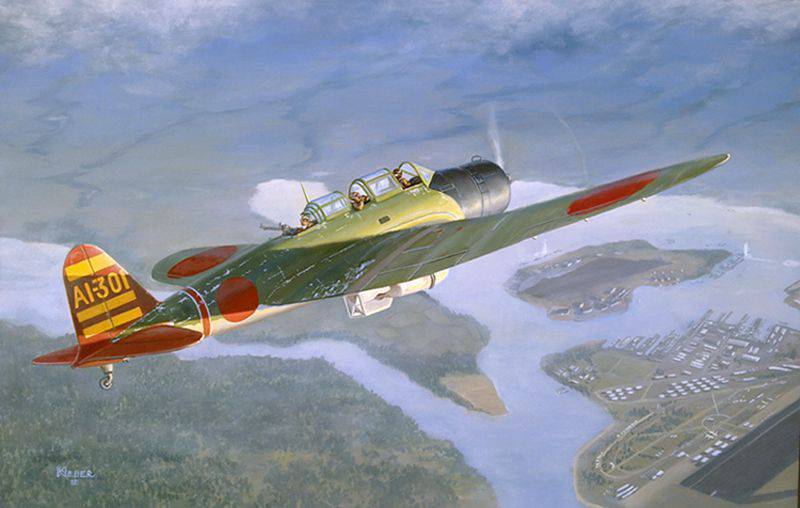
The Aichi D3A double dive bomber adopted the Japanese Navy in the 1939 year. It was made according to the scheme of a single-motor cantilever monoplane with a non-retractable landing gear and underwing brake covers. On the D3A was installed engine power 1280 l. with. In terms of its characteristics and concept, it was close to the German Ju-87, which was already famous throughout the world, and even surpassed the German machine in accuracy of dive bombing. It was the D3A aircraft that later sank the English cruisers Cornwall and Dorsetshir less than 15 minutes after the start of the raid. At the final stage of the war, already outdated aircraft were used as a flying bomb, manned by suicide bombers.
Finally, the basis of the Japanese naval air groups was a small-sized Mitsubishi A6M fighter from Mitsubishi, which later became widely known as the Zero. This aircraft was put into service in the 1940 year, and by the time being described less than four hundred cars were produced. Mostly 21 modification manned radial engine power 925 l. with. Possessing maximum speed in 538 km / h, and armament consisting of two 20-mm guns and 7,9-mm machine guns, excellent maneuverability, this deck fighter had no equal in the sky of the Pacific Ocean until the beginning of 1943. In addition to excellent speed and maneuvering data, he also had a huge flight range that exceeded 2,4 thousands of kilometers.
Of course, these Japanese aircraft had certain drawbacks. For instance, their fuel tanks were neprotektirovany, the pilot was not protected by armor. But on the whole, the Japanese cars were advanced for that time in terms of flight performance.
For almost the entire flight over the ocean hung thick clouds. However, closer to the island of Oahu, the clouds began to thin, and over Pearl Harbor almost completely scattered. In 7 hours, 49 minutes, Captain Futida gave the command to his group: “Attack!” The torpedo bombers rushed down, and the fighter jets dispersed and got ready to repel US interceptors. A group of dive bombers began to climb, and those machines that had 800-kilogram bombs on the suspension, performed a wide loop in order to attack from the south-west direction last.
First of all, the Japanese delivered a preemptive strike at the army airfield Wheeler Field. As a result of a quick assault, all 60 brand new P40, lined up in straight rows at the airfield, turned into flaming torches. In 7 hours, 53 minutes, fueled by a premonition of victory, Futid gave the order to the radio operator to give Nagumo a conditional signal “Torah ... Torah ... Torah”, which by secret code meant: “Sudden attack failed!”
The main objective of the Japanese pilots were heavy ships of the US fleet - battleships and aircraft carriers. Unfortunately for the Japanese, the aircraft carriers were absent in the bay at that moment, so the entire attack fell on the battleships. Six powerful ships, which stood in pairs along the east coast of the island of Ford, became the main prey - a "tidbit" for the torpedo bombers. In the center of the battleship "West Virginia", in a few minutes of the raid was hit by seven torpedoes in the board. Even for a huge battleship, this was more than enough! And although the two air bombs that fell into it did not explode, nothing could change anymore: the ship, which was rapidly gathering water, went to the bottom, taking the crew of the 105 with it.
But even earlier than this, the battleship "Arizona" was hit by four bombs from diving bombers, and a torpedo hit its side. The ensuing monstrous explosion of the detonated ammunition and boilers tossed a cloud of fire and smoke to the 1000-meter height. As a result, almost the entire crew died - 1100 sailors were killed on the spot.
A pair of torpedoes hit the "Oklahoma", but dive bombers, having missed, dropped several bombs that exploded near the left side. On the battleship fires broke out, complicating the struggle for the survivability of the ship. As a result, Oklahoma turned upside down and sank. She took to the world more 400 people. In fact, it turned out that the huge US battleship to death only took two light aircraft torpedoes.
Covered with the hulls of their dying brethren, the battleships Tennessee and Maryland only had damage from aerial bombs that did not become fatal. Pilots of the land of the rising sun landed a couple of torpedoes in the battleship California, which stood alone, and a third one exploded near the side, hitting the mooring wall. The burning "California" was also the target of several dive bombers, but after that it continued to stay afloat for another three days, after which it sank, taking more than a hundred crewmembers with it.
Only one battleship could give a move. It was "Nevada". Having earned a torpedo in the side, the ship, however, was not very badly damaged. After some time, all of his anti-aircraft guns, machine guns and universal caliber guns opened barrage. The commander of the battleship, realizing that the huge stationary ship was an excellent target for the next strikes, decided to bring the Nevada into the sea. By the time the second wave of attacking aircraft approached, the battleship was slowly moving along the fairway, heading for the exit from the harbor. Captain Futida immediately recognized his intention and gave the order to the dive bombers to flood Nevada at the exit, thus closing the harbor. One after another in the battleship got five 250-kilogram armor-piercing bombs. But six explosions sounded, as detonating gasoline vapors to airborne reconnaissance aircraft. Giant flames engulfed Nevada, and the captain ordered the battleship to be thrown into the shallows.
The eighth battleship of the US Pacific Fleet, the flagship Pennsylvania, was docked with the destroyers Downes and Cassin. Thick smoke of fires hid him from the first Japanese “wave”, and he avoided damage. However, Futida was able to see these ships. Having rushed to the attack, the Japanese pilots of the second shock echelon faced much more serious resistance. Everything that was capable of shooting led to the sky, ranging from universal guns of battleships and cruisers to personal weapons marines. Naturally the fire was erratic and not accurate. There were even those who scorched into the air, closing their eyes. But, anti-aircraft fire still reduced the accuracy of the bombing. "Pennsylvania" struck only two bombs. But the destroyers got to the full: the blast wave threw them off the kiloblocks and threw them at each other. Hardest hit destroyer "Show". He "got" the whole three bombs, and artpogrebov explosion put an end to it stories.
To the west of Ford Island, anchored frozen, the light cruisers Tangier, Relay and Detroit, the former battleship Utah, which was converted into a target ship. As a result of the Utah raid, it rolled over and sank. The cruiser "Reley" received a torpedo in the port side. Minelayer "Oglala," a torpedo struck quickly sank. However, he was saved by the cruiser "Helena", as he closed it with his own body. As a result, the cruiser, having already had one torpedo hit, remained afloat.
The Japanese dive bombers destroyed the flying boats and their hangars at the southern tip of Fr. Ford A "last samurai greetings" was a direct hit by an aerial bomb in the floating base of seaplanes "Curtiss".
The Japanese lost all 29 airplanes, of which 9 dive bombers Aichi D3A Aichi D3A, Nakajima bomber B5N2 and five Mitsubishi A6M fighters. No 55 crew members returned to the aircraft carriers. It is worth remembering that before the raid on Fr. Oahu was based above_300 serviceable American combat aircraft, and this is almost double superiority, and for fighters generally repeated. Where was the base's air defense system?
Around 7 o'clock in the morning 7 December radar located on Mount Opana on. Oahu recorded massive flare on the screens of a large group of aircraft that were moving towards the island from the north-east. In 7 hours 6 minutes were reported to the air defense information post, and then ... Further, as usual. Imagine a young officer at the end of a sleepless night shift. Moreover, his duties and rights did not differ by concreteness. Further, in the air defense system, one part of which was subordinated to the fleet, and the other - the army. And between these parts, according to the usual negligence of the relationship between the "naval" and "land" in the USA, there was no mutual understanding.
It should also be added that the person on duty was disoriented by the planned arrival of the squadron of four-engined B-17 bomber on the island and the reconnaissance aircraft coming from the aircraft carrier to the island on the island this morning. It is also impossible to ignore the whole measure of responsibility in case of a false alarm. And the young lieutenant made a mistake. “It's all right,” he told the radar operator. “These are ours.” But if he had decided to request the approaching planes by radio, he would have received an answer from the crews of the B-17 bomber that were already in the air.
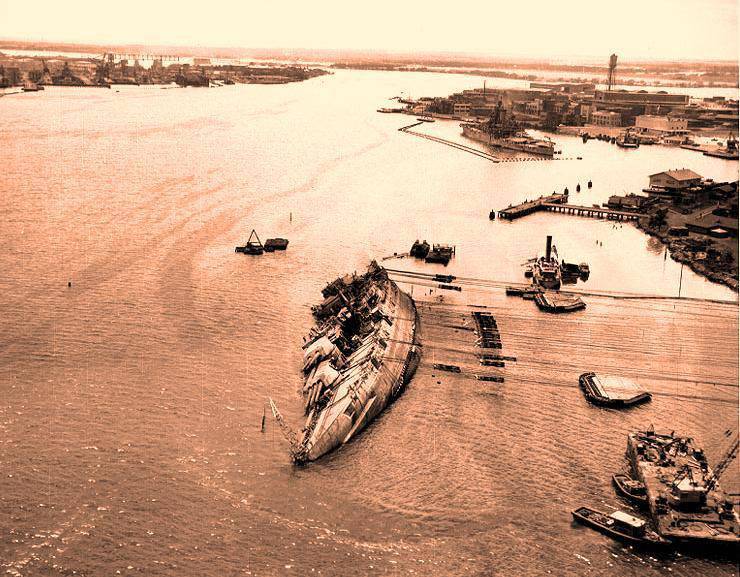
Japanese pilots simultaneously with strikes on ships attacked the airfield of Naval Aviation Ewa, as well as the base of army bombers Hike Field. Almost 20 Japanese A6M “Zero” stormed the airplanes, which stood in Ewe in open areas, and within just a few minutes destroyed 30 American cars. And in Hickem Field, twelve B-17 bombers were burned on the ground, as many A-20 and B-24, as well as an order of outdated B-30 18.
At the airfield Kaleyva, at this time only one fighter squadron was stationed. That is why he was ignored by the Japanese. Lieutenants Welch and Taylor took off from his strip. According to their report, at the Willer Field airfield, they were able to overwhelm 7 enemy planes from 11 shot down in the morning of December 7 over Oahu.
One of the groups of Japanese fighters, having ascertained the absence of American fighters in the air, rushed to the base of the Kaneohe hydroaviation. After making several visits, they destroyed three dozen RV.1 seaplanes.
The last airfield, which was hit by the first wave, was Bellows Field - the base of army fighters. The four P40, which were soon shot down by the more experienced A6M Zero pilots, managed to take off from it. Then the Japanese fired American fighters standing at the airfield during the attack.
There was a Japanese fighter and the opportunity to practice shooting in flying targets. At the end of the operation, they noticed huge four-engine B-17 from the squadron that flew from the mainland. Helplessly circling over the airfields that had been torn apart by explosions, they did not have the opportunity to fight off the attacking fighters: their on-board machine guns, carefully lubricated, were packed in factory boxes. They could not fly, because the fuel was already running out. Only two "fortresses" remained intact, but they too could not be used: all the fuel storages burned down, there was nothing to refuel.
Half an hour later, the squadron of reconnaissance planes taking off from the deck of the aircraft carrier Enterprise had divided the sad fate of the bombers. The pilot of one of them was able to give a warning radiogram to his aircraft carrier. The Enterprise turned to the south-east, but the reconnaissance aircraft were not destined to leave. Three of them were shot down by the Japanese over the sea, and one over the island. The fate of the fifth was even more sad. Destroyers of the USA shot him down, whose crazed crews began to fire at any flying object, without knowing where their own, where others are. Madness continued after the end of the Japanese attack. Already in the afternoon, two airplanes from the same "Enterprise" gallant American infantrymen shot down with bursts of their machine guns.
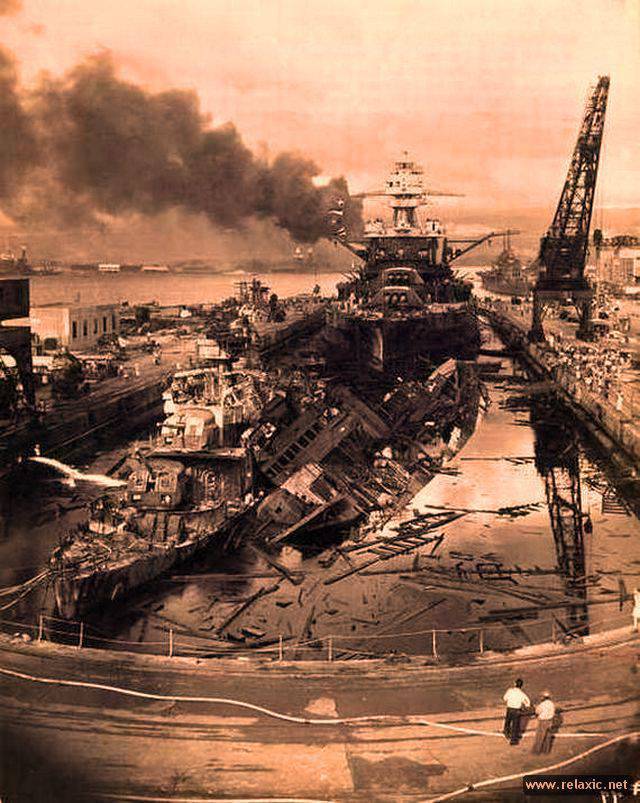
This day cost America 3 thousands of human lives, 300 different planes and a whole fleet.
Sources:
Ivanov S. Pearl Harbor // War in the air. No.44. C. 24-50.
Ivanov S. А6М “Zero” // War in the air. No.3. C. 21-24.
Bear A. Impact on the Pearl Harbor // Wings of the Motherland. 1992. No.1. C. 30-31.
Yakovlev N. Pearl Harbor. December 7 1941 of the year. True or fiction. M .: Publishing house of political literature, 1988. C. 62-81.
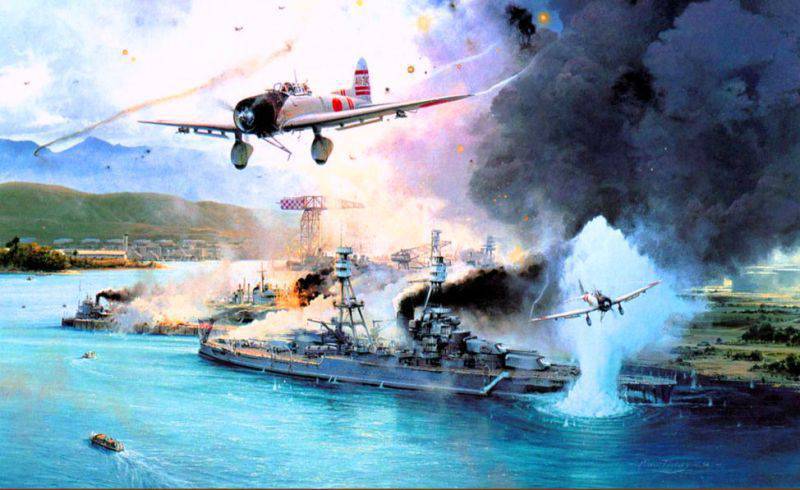
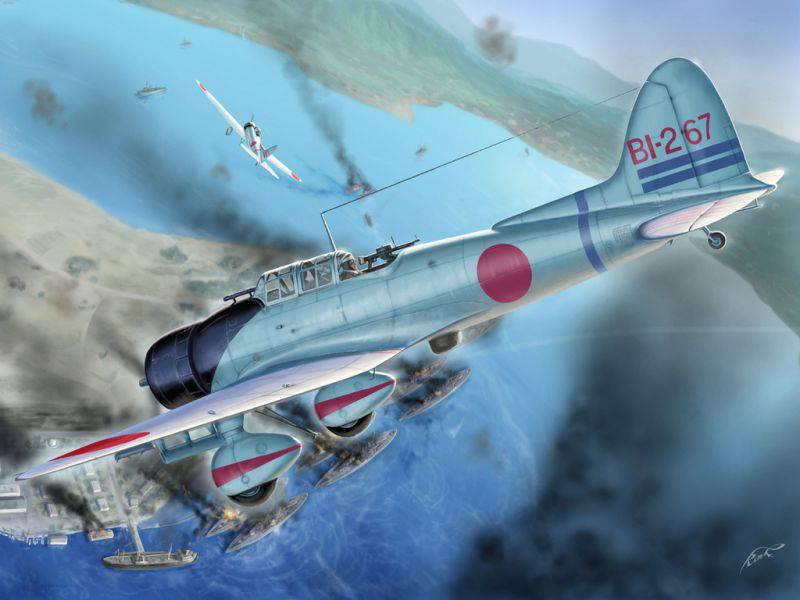
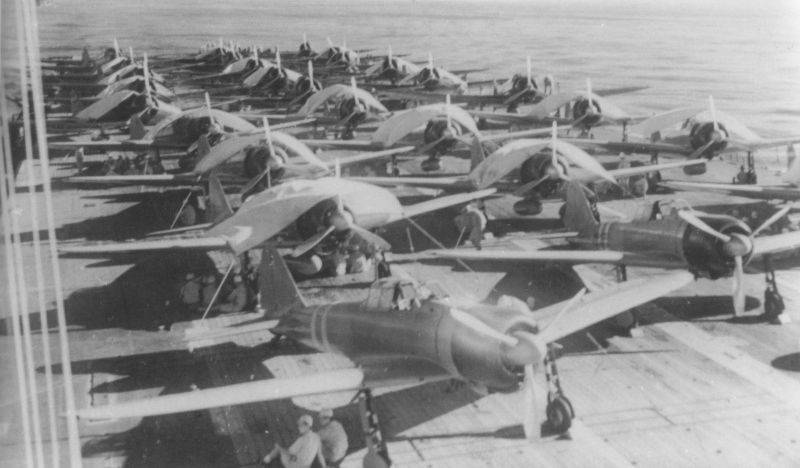
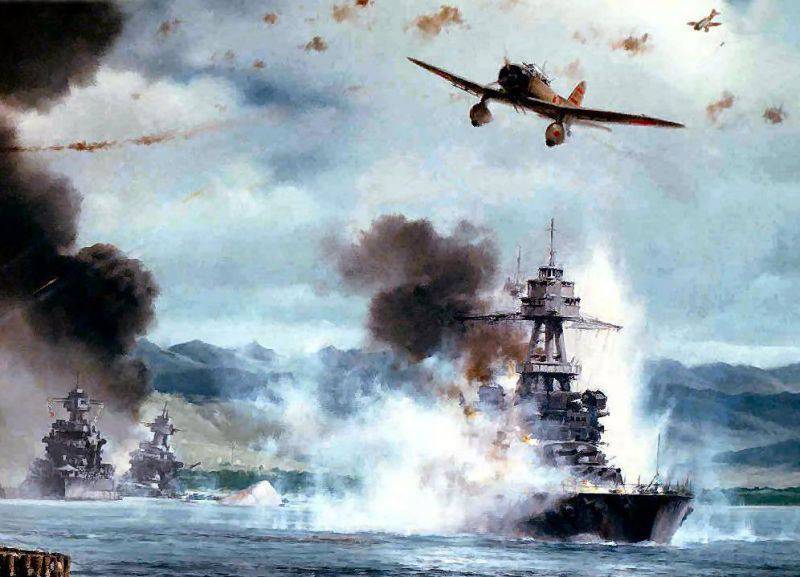
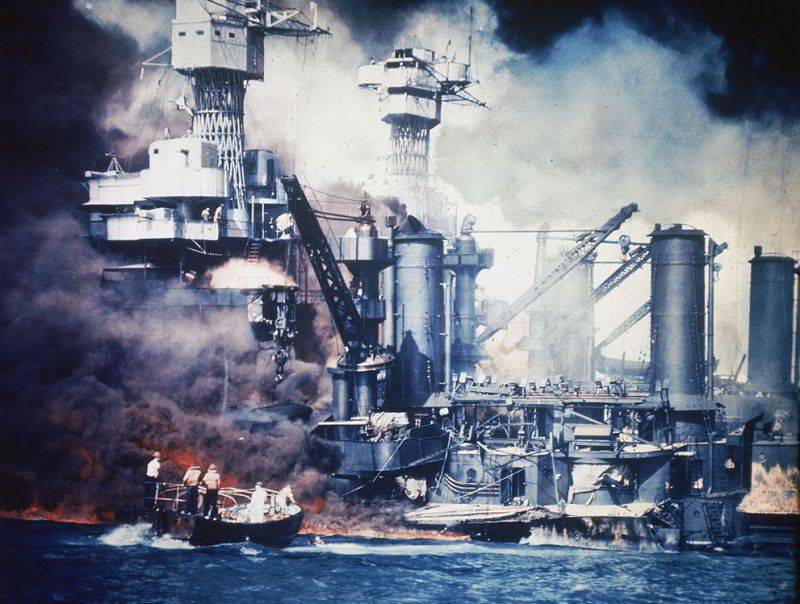
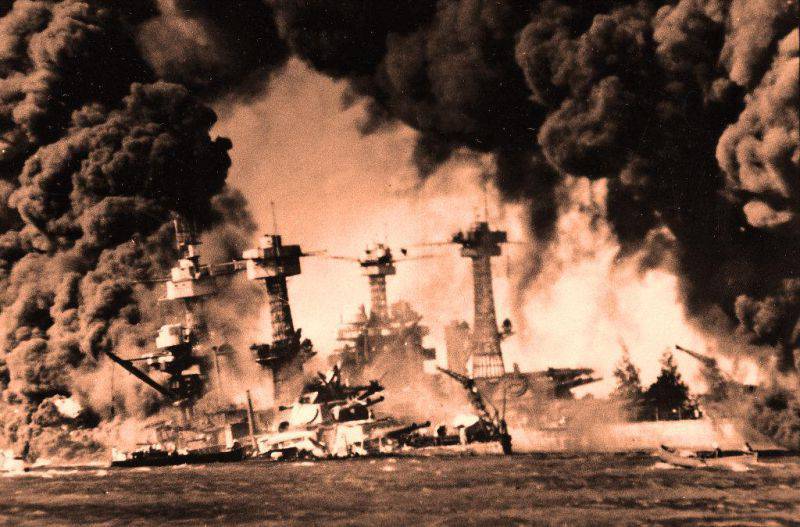
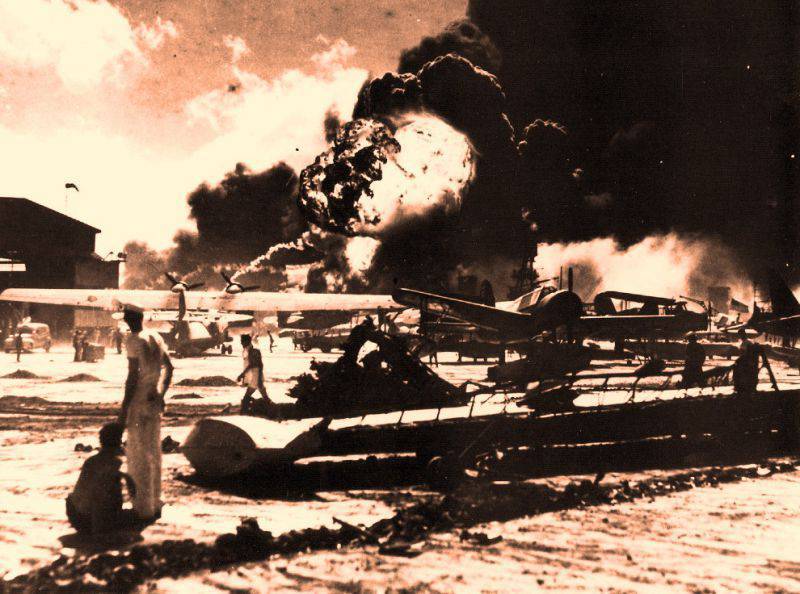
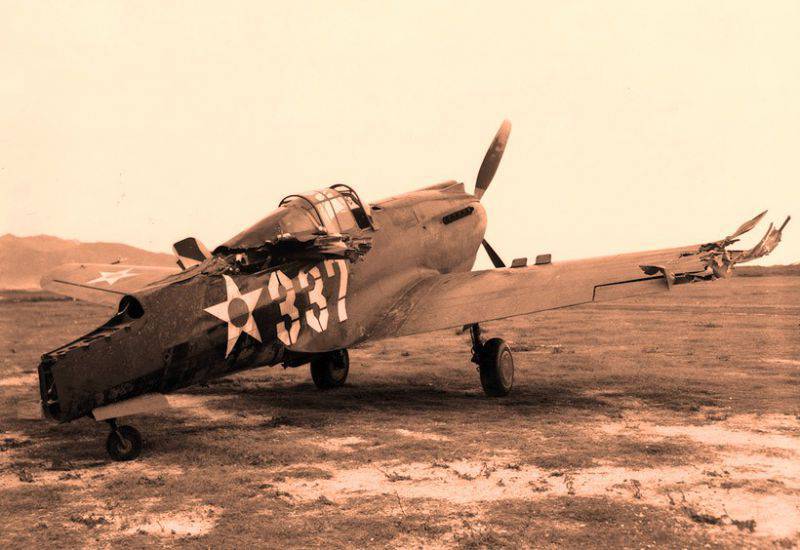
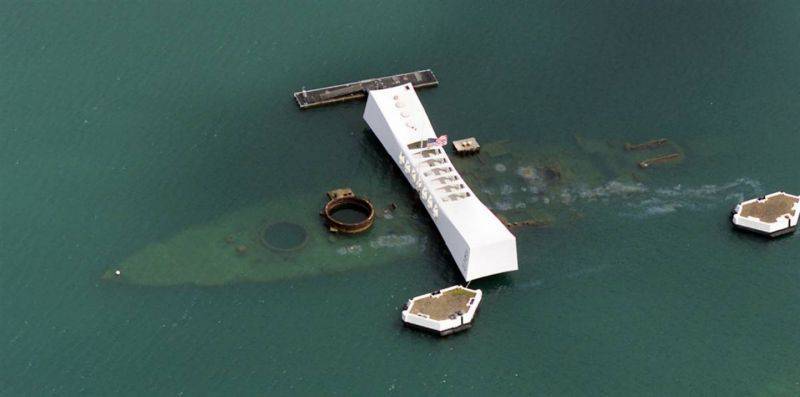
Information